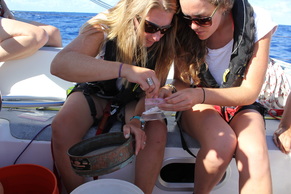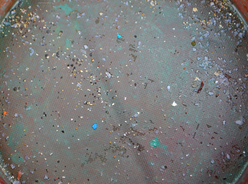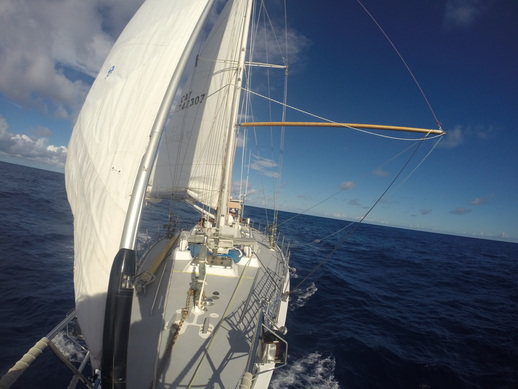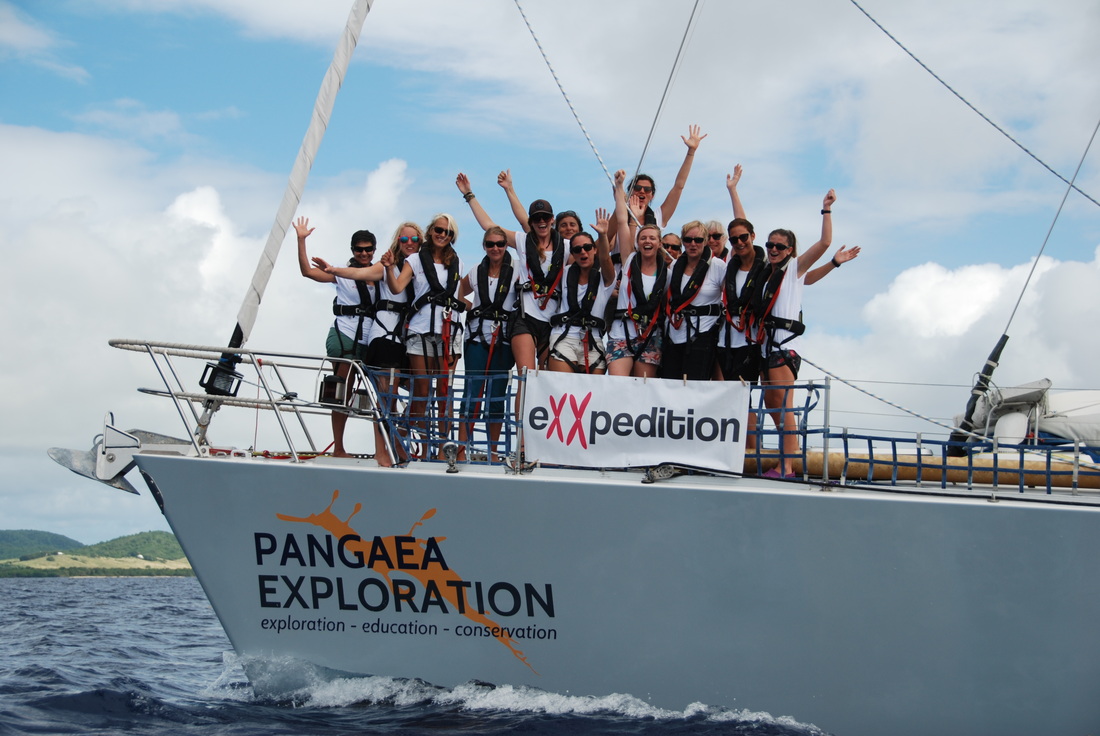 eXXpedition adventure scientists at work
eXXpedition adventure scientists at work
By Jennifer Pate
It’s a distressing experience to stare at something that looks pristine and untouched by human activity, and yet to know the reality is quite different. This is how I felt during my trip sailing across the Atlantic Ocean.
As I admired what looked like clean waters—both in the ocean and in my sample bottles for the ASC Microplastics Project—we pulled up many pieces of plastic in our daily trawls.
In November and December of 2014, I crossed the Atlantic Ocean on board the Sea Dragon, a 72-foot sailboat. Our crew of 14 women included changemakers from scientists to activists, artists to technologists. We were sailors and non-sailors alike.
While loving the adventure of crossing 2,600 nautical miles from Lanzarote, Canary Islands, to Martinique in the Caribbean, we were also on a mission: to make the unseen seen—from the pollution in our oceans to the toxins in our own bodies.
It’s a distressing experience to stare at something that looks pristine and untouched by human activity, and yet to know the reality is quite different. This is how I felt during my trip sailing across the Atlantic Ocean.
As I admired what looked like clean waters—both in the ocean and in my sample bottles for the ASC Microplastics Project—we pulled up many pieces of plastic in our daily trawls.
In November and December of 2014, I crossed the Atlantic Ocean on board the Sea Dragon, a 72-foot sailboat. Our crew of 14 women included changemakers from scientists to activists, artists to technologists. We were sailors and non-sailors alike.
While loving the adventure of crossing 2,600 nautical miles from Lanzarote, Canary Islands, to Martinique in the Caribbean, we were also on a mission: to make the unseen seen—from the pollution in our oceans to the toxins in our own bodies.
It took us 19 days to complete the passage. For the first week it was basically like being in a giant washing machine, as we faced large swells and were surrounded by squalls. On other days, intense heat had us at the helm seeking the only spot of shade on the boat. Every afternoon at 1 p.m., our first mate Shanley McEntee shouted, “It’s time to science!” and all hands appeared on deck.
 Plastic pulled in by the crew’s trawl
Plastic pulled in by the crew’s trawl
We dropped a bucket off the side of the boat to collect water for the ASC project, and drag the manta trawl from a spinnaker pole to sample further for plastic pollution. Our skipper Emily Penn expertly helmed the boat to ensure our sampling went smoothly. I watched the trawl glide through the water’s surface, hoping it would find nothing, but knowing it would.
With the instrumental help of Dr. Jenna Jambeck, we collected the ASC samples in bottles, making sure to record the date, time, water temperature, wind speed, wind direction and any other variables needed. The ASC data sheets and protocols were easy to follow and made it very clear what needed to be done to contribute successfully to the project.
It was amazing to know we were contributing to ASC’s wider data set, and simultaneously raising awareness for the value of adventure science, which can help increase our knowledge and global awareness of issues affecting environmental and human health.
Stepping on land for the first time in 19 days in Martinique was an incredible feeling, but I arrived with mixed emotions. We had grown close in our time together, and it was truly refreshing to have been away from the stresses of everyday life.
With the instrumental help of Dr. Jenna Jambeck, we collected the ASC samples in bottles, making sure to record the date, time, water temperature, wind speed, wind direction and any other variables needed. The ASC data sheets and protocols were easy to follow and made it very clear what needed to be done to contribute successfully to the project.
It was amazing to know we were contributing to ASC’s wider data set, and simultaneously raising awareness for the value of adventure science, which can help increase our knowledge and global awareness of issues affecting environmental and human health.
Stepping on land for the first time in 19 days in Martinique was an incredible feeling, but I arrived with mixed emotions. We had grown close in our time together, and it was truly refreshing to have been away from the stresses of everyday life.
The best part of our return was knowing that our samples were making their way to labs where they would contribute to wider data sets determining the current state of plastics in our oceans. We also knew that our experience on this trip would help us bring the issue of plastics in the marine environment to life and raise awareness of the actions necessary to combat this problem through talks, seminars, workshops and our forthcoming documentary.
As I edit the documentary, to premiere on March 7 at the Royal Geographical Society in London, I am optimistic about how we can work together to create a healthier future. It is reassuring to know that initiatives such as the ASC Microplastics Project exist and are an integral part of making this change possible.
As I edit the documentary, to premiere on March 7 at the Royal Geographical Society in London, I am optimistic about how we can work together to create a healthier future. It is reassuring to know that initiatives such as the ASC Microplastics Project exist and are an integral part of making this change possible.
Jen Pate, along with another member of the eXXpedition crew, Dr. Elaine McKinnon, will be launching a new eXXpedition in the Great Lakes region of North America later in 2015. To learn more about this voyage, visit www.exxpedition.com. Find more about the ASC Microplastics Project on our website, our Field Notes blog, Facebook, Twitter and Instagram.


